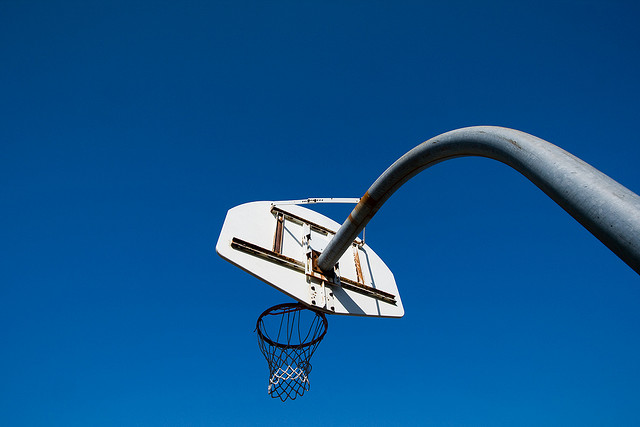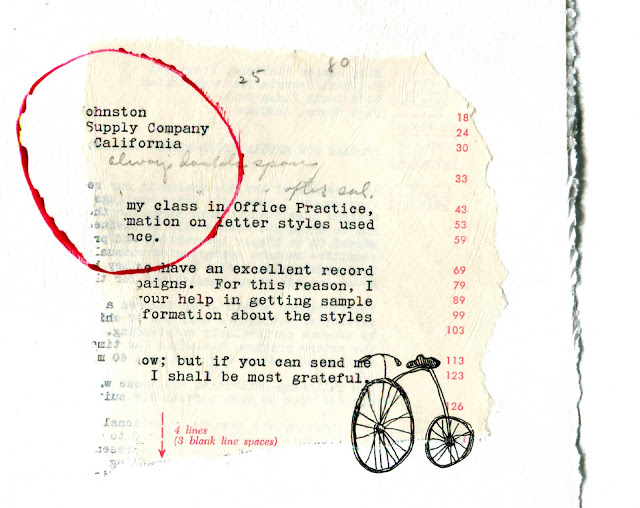
By Zsofi McMullin
The first time the trainer tells me to put my hands on my side and feel my abdominal muscles work, I can’t help but laugh. The only thing I feel are rolls of fat and loose skin. This is not really a surprise—I haven’t exercised in a good decade or more and expecting any muscle activity in my middle region seems silly. For weeks on end, I don’t even feel the effects of doing sit-ups or crunches. It’s like there are no muscles there to feel sore.
Recently I’ve been pushing my body—I am not even sure why. I’ve always hated exercise. I never felt the rush of adrenaline, I never enjoyed the sweat, the effort, the hassle. But something clicks this time around—is it turning forty? Is it fear that the achy knee every morning will lead to more serious issues? Is it wanting to run and swim and climb with my six-year-old? I suppose it is a bit of everything.
I feel my body go into that zone—not entirely under my control, pushing beyond what my mind would encourage under normal circumstances. My mind is more likely to whisper “go, sit on that couch, and have a piece of chocolate and a glass of wine.” But this body pushes on, struggling, jiggling, losing balance, and unglamorously dripping in sweat.
I still hate the sweat and the hassle. But the trainer on the videos is not entirely hateful and her mantras soon take on meanings beyond exercise: “If you want something you’ve never had, you have to do something you’ve never done.” “Don’t wish for it, work for it.”
•••
The night before Sam is born, I feel like an animal. I spend the night curled up in an armchair, leaning forward to take the pressure off my aching back. I build a small fort, placing pillows around me and on the coffee table in front of me so I can rest my arms and head. I stay like this for hours, not asleep but not fully awake either, just conscious enough to record the start and end of each contraction.
My friends who are pregnant at the same time have elaborate birth plans that involve doulas and hot tubs and yoga balls and no drugs. My birth plan includes getting through the whole ordeal feeling as little of it as possible. I want every possible drug and intervention.
Sam is born fast—no time for an epidural or any other drug to take effect. It is the last day of the year—a snowstorm kicks up outside; the sky is eerily pink and it is a Blue Moon.
My body takes over and I feel terrified by the force and inevitability of muscles contracting, skin stretching, ribs being kicked and pushed from within. There is nothing I can do to stop this baby from violently forcing its way out of me. I can breathe and push—or not—the result will be the same. I am terrified of pushing, but I can’t help it. My body does it for me and all I can do is hold on and look at the snow and bare my teeth at the nurse who is yelling at me to push harder.
But weirdly, there is no pain. At least none that I can remember now. Or not pain like a pulled muscle or a headache or a sore throat. The pain is bigger than that, almost beyond feeling. And then so much relief when it’s finally, finally over. In a haze after my baby emerges, I ask the nurse to see the placenta—she reaches into the bucket on the floor between my legs and lifts up the entire sack that my baby lived in for nine months. I am almost more fascinated by it than by the baby lying so quietly in his warming cot—the baby who is no longer a part of my body.
This body grew the one thing to nurture the other.
•••
In my exercise videos the trainer always tells you what exact muscles to engage during certain exercises. The core muscles to protect your back; the biceps to help out your shoulders, the calves and knees to support you as you lift heavier weights.
It takes time to learn to locate all of these muscles. This is news to me. How do you know when your “pelvis is tucked” or whether you are “squeezing your glutes” or “engaging your back” or “exploding through your arms” or “shooting energy through your calves,” when these are not things that you do on a regular basis?
But I do feel the difference—suddenly, I feel pain where I am supposed to, or “feel the burn,” as the trainer puts it. Muscles tighten, sweat drips, breath quickens—even though you are supposed to slow down and control your breathing. When you are in pain, you know you are doing it right.
I wonder if it works like that for the heart. Can I choose to engage it or not? Can I learn to flex or tighten just certain parts of it at certain times to protect it from injury? When it hurts, does it mean I am using it correctly, that all of its muscles are fully functional, aligned, doing what they are supposed to be doing?
•••
I miss being unaware of my body. I can’t remember when that was—maybe in my twenties?—when my body just did what it was supposed to do and I never gave it a second thought. I didn’t think about my weight or about being healthy or eating healthy, or whether I should exercise or not. I didn’t think about whether my stomach was too big to wear that shirt or if those jeans will make my butt look big. My body was just there, doing its thing. It never protested, it didn’t put on ten pounds in one stressful year. It didn’t ache, it didn’t bloat, it didn’t feel heavy and stiff in the mornings. It just was.
I appreciate that blitheness now when I try to run up the stairs too fast or when I lift my arm and there is that extra bit of jiggle or when I run my fingers across the stretch-marks on my belly and that little extra pooch that’s there from having a baby—next to the other little pooches from too much Haagen-Dazs.
Why keep doing something that is painful? Why does the body want to stop so badly and why am I trying to convince it to not stop? Is it to build a stronger core, hoping that it will hold me up—longer, straighter, leaner? “It doesn’t get easier, you just get stronger,” says the peppy trainer and I want to believe that she is right.
•••
By the time I cross the bridge over the Main river in Frankfurt, I have a good rhythm. I see the old church tower in the distance, my destination, and I focus on it step after step. My skin prickles against the cold, damp day. My cheeks feel flushed and my hair whips around my face. I pick up a chestnut at the foot of the bridge, under a tall chestnut tree, and I roll its smooth skin between my fingers in my pocket as I walk.
Maybe it’s the jetlag, or maybe it’s the cold, or maybe it’s the excitement of walking in a foreign city—suddenly I am aware of my body moving through these streets. I feel the cobblestone on my soles through my sneakers, my calves stretching, knees bending, thighs tightening. I feel the cold air rush into my lungs. I think of how odd it is that just twelve hours earlier I was in New York and now I am walking here, a half a world away, across this river.
Just twenty-four hours ago, I was snuggled in bed with my son—warm and sleepy. Just before that, I was in bed with my husband; just before that, at work, or exercising, or having coffee with a friend or walking down the aisles at the grocery store. And days and months before that, my body was walking on sandy beaches and shady hiking trails in Maine; along busy streets in London and Budapest and New York.
And years and years before that, my body was caressed by lovers, cut open by surgeons; it rested and moved; it developed breasts and curves; it grew tall with solid bones; it learned to walk, to crawl, to sit up. It emerged from my mother.
But on this day, this body is walking on gray, misty, medieval streets, carrying along all of its experiences. I feel it all rush past me and through me and I try to imagine where this body will be in a few hours, days, weeks, months, years.
•••
One morning Sam sits on the floor and plays while I huff and puff away during my thirty-minute workout in the living room. He watches me, then the screen. When I’m done and I flop on the couch with my water bottle, he curls up to my side. He is still in his PJs—it’s a Saturday. His long, thin body has filled out over the summer, but he still somehow finds the right position to tuck himself as close to me as possible. His hand is on my belly, one leg across mine.
“Mama,” he starts, “are you going to be as straight as those people on the TV?”
It takes me a moment to realize that he means “skinny.” “Well, no, probably I will never be as straight,” I answer. “But I will be straighter, hopefully, if I keep up the work.”
Sam seems pacified for the moment. “Okay, because I want my mama to be soft and round and warm.”
•••
Change is hard to detect—the definition of muscle against flab; the way inches melt off; the way things become tighter, lifted, lighter. It is discouraging, really, that so much work produces such little effect at first. “You have to take it one day at a time, one pound at a time,” the trainer announces cheerfully. And I do. I really don’t have a choice.
On Facebook I’m part of a workout challenge group and I look at sweaty pictures of other women and watch their transformation from before to after. I don’t take any photos of my body and I definitely don’t post them, but I’d like to think that the same is happening to me, even if it is imperceptible to my eyes.
And I wonder whether eventually the downfall of my body will happen like this as well—one freak, aging cell at a time, unnoticeable to the naked eye, but inevitable and out of my control, just like giving birth.
•••
ZSOFI MCMULLIN is a writer with recent essays in The New York Times, The Washington Post, The Butter, and several other online publications. She blogs at http://zsofiwrites.com and she is on Twitter as @zsofimcmullin. She is a regular contributor to Full Grown People.
Read more FGP essays by Zsofi McMullin. (And, hey, this very one is nominated for a Pushcart Prize!)

 Follow
Follow

